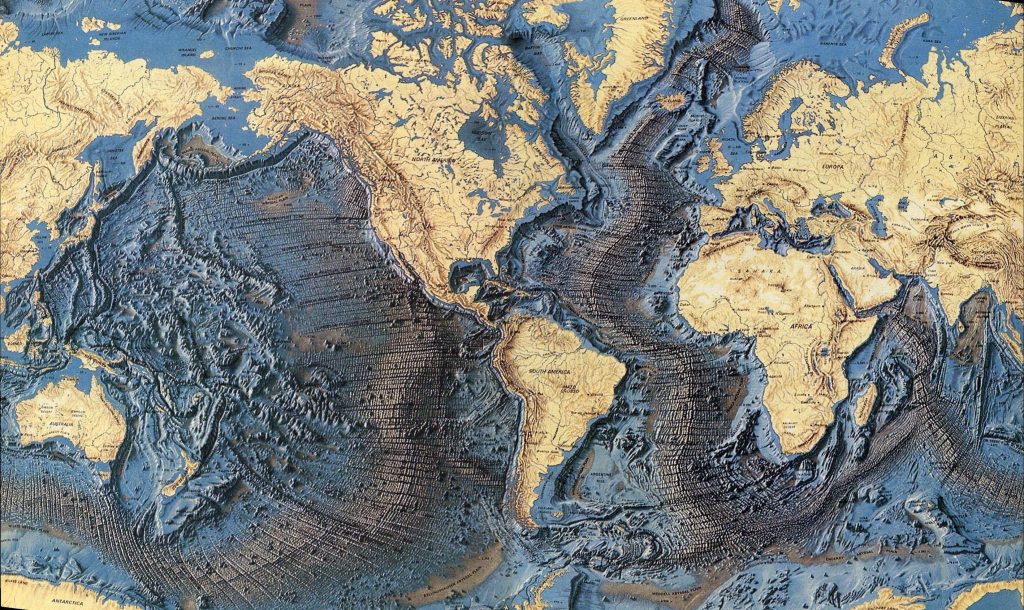
During my Ph.D. at the Institute of Geological and Nuclear Sciences Limited (GNS Science) in New Zealand, I had the great opportunity to study, experimentally, fundamental mechanisms of rock-fluid interactions. The laboratory work was mainly focused on the study of the hydrothermal alteration phenomena occurring both in oceanic and in continental environment. For this work, state-of-the-art high temperature and pressure Hydrothermal Apparati in continuous flow, were used (Fig. 1).

Wairakei Centre, Taupo, New Zealand (©Mauro Passarella, 2016)
1) The experiments conducted in laboratory for the simulation of the oceanic environment were carried out with the intent to “re-produce” (at small scale) the hydrothermal alteration (i.e., the contact between the rock and a fluid) that occurs in the reaction zone of a sub-seafloor hydrothermal system at Mid-Ocean Ridge (MOR). This means that with my experiments I simulated environmental conditions occurring at ~ 6 – 7 km below the oceanic crust, with temperatures up to 400˚C and pressures up to 500 bar. In oceanic environment, a MOR (grey areas in Fig. 2) forms exactly where two tectonic plates move apart, allowing molten rocks to rise-up from the mantle. At the same, new oceanic crust generates.

2) The laboratory experiments for the simulation of the hydrothermal phenomena occurring in continental environment (continental crust) were performed with the intent to study the geochemical mechanisms of one of the most powerful renewable resources available to us, onshore: the geothermal energy. The geothermal consists in exploiting the constant (base load – not intermittent) heat supplied by the earth at depth through the circulation of hot hydrothermal fluids that rise up to the surface (Fig. 3 and 4). For example, if the fluid is very hot (usually ≥ 100-110˚C) the heat can be utilized by a geothermal power plant to produce electricity (Fig. 5). Otherwise, if the temperature is lower (25˚C < T < 100˚C) the fluid can be directly suitable for the creation of extensive district networks that supplies domestic warm water and heating to homes and buildings.
I’m extremely convinced that this source of green energy will be one of the most utilized technologies to contrast the well-known climate change. However, despite several Countries in the world (e.g., New Zealand, Iceland, Indonesia) have been oriented, decisively, on this application since many years now, the geothermal production needs to be more widely improved globally, in order to give a significant impact on the energy transition.



Continuing with my studies, to date, my position at Centre for Deep Sea Research (UiB) within the SEAS programme gives me the great opportunity to extend and advance my experimental studies approaching different aspects of marine geology. Anyhow, both my interest for hydrothermal processes and for methodologies aimed at carbon reduction will be always combined. At Centre for Deep-Sea Research, I’ll continue in completing experimental simulations on rock – fluid interactions with the intent to explore fundamental geochemical processes occurring in the Arctic Mid-Ocean Ridge (AMOR) (Arctic Polar Circle between Norway, Greenland and Iceland, Fig 2), at ocean floor. For the experiments, a new state-of-the-art Hydrothermal Apparatus always in continuous flow, with a maximum temperature of 400˚C and a maximum pressure of 400 bar, will be used.
Two main focus points will be explored:
1) the study of the path of major and trace elements during hydrothermal alteration below the oceanic crust at different depths, with a particular interest on heavy-metals mobility and the consequent formation of (economic) mineral deposits at seafloor (e.g., Seafloor Massive Sulfides);
2) the comprehension of the mechanisms of the Carbon Capture and Storage (CCS) in seafloor setting. This technique involves the transformation of carbon, in the form of CO2 (liquefied), into stone (i.e., carbonates minerals). The explanation of this technology will be discussed, more detail, in a separate post.
Then, in addition to the laboratory work, I’ll have the opportunity to join several scientific expeditions on board of different research vessels at sea (around the Polar Arctic Circle) for the study of natural geological processes and settings, at different depths. This is of great importance as it will permit a direct access to the natural seafloor environment in order to compare both geochemical and petrological data with results from laboratory experiments.
Do you want to know more in detail about “life” during a scientific cruise on board of a research vessel? Great! You have just to look at my next post (coming soon)! …below my last picture (Fig. 6) of this post. Only a taste of this experience 😉
BUT… for those who are really impatient, you can start watching my video made on board of the RV Kronprins Haakon vessel in direction of the Molloy Deep (May 2022) and on board of the G.O.Sars vessel in direction of the Mohns Ridge (June-July 2022), in the Arctic Polar Circle, just clicking here. Enjoy!


Be First to Comment